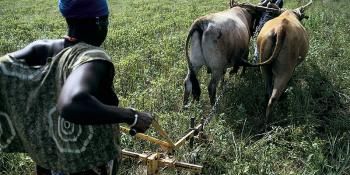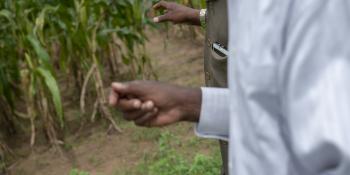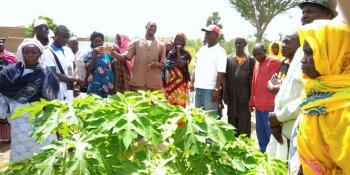A community of practice for African researchers and practitioners

Summary
Yield gap analysis is an important tool to estimate the potential crop production increases in a controlled environment. This analysis gives valuable insights into the biophysical requirements to meet food production goals. While yield gap analysis is well documented for cereals, there are significant gaps in such analysis for commodities such as potatoes. Where data is available, it is often location specific and not scalable. The use of simulation models is also limited by difficulties in parameterisation.
In this context, the International Potato Center (CIP) formed a ‘community of practice’ with breeders and agronomists from 12 African countries to arrive at reliable parameters and thereby yield gap analyses for the region. The community of practice was primarily composed of experts with between 8 and 31 years experience working on the crop, and validated the parameters for the Solanum simulation model developed by CIP. Furthermore, the community of practice also familiarised themselves with the Solanum model, giving inputs for further development of the model. Through these inputs, Solanum is now able to provide expert validated and more accurate yield gap analysis for potatoes in the region, in a user friendly manner. While there is a need to further expand the scope of this work to have a truly scalable dataset, the initial regional analyses show that potato yield gaps are likely to be higher than expected. They even exceed the yields normally obtained by scientists in on-station trials. Yields for the average farmers are currently less than 10 t/ha, whereas there is potential to achieve 50 t/ha. This information will be crucial for regional policy makers in their endeavour to formulate appropriate policies. The community of practice has agreed to work together to widen the scope of their work under the umbrella of an initiative called ‘Climate-Smart Potato in Sub-Saharan Africa’.
Key facts
CIP research indicates that there is high potential to increase potato yield in Sub-Saharan Africa.
Solanum simulation model provides expert validated and locally relevant yield gap analysis for Sub-Saharan Africa.
Lessons: key elements of success
The community of practice provided a valuable platform for participatory development of the Solanum model. This has not only validated the parameters of the model, but also ensured that the model is simple and easy to use, and will ensure higher uptake.
Related research outputs
- Quiroz, R., Harahagazwe, D., Condori, B., Barreda, C., de Mendiburu, F., Amele, A., Anthony, D., Atieno, E., Bararyenya, A., Byarugaba, A., Demo, P., Guerrero, J., Kowalski, B., Anthony Kude, D., Lung’aho, C., Mares, V., Mbiri, D., Mulugeta, G., Nasona, B., Ngugi, A., Njeru, J., Ochieng, B., Onditi, J., Parker, M., Randrianaivoarivony, J.M., Schulte-Geldermann, E., Tankou, C.M., Woldegiorgis, G., & Worku., A. (2014). Potato yield gap analysis in SSA through participatory modeling: Optimizing the value of historical breeding trial data. CIP Working Paper.


